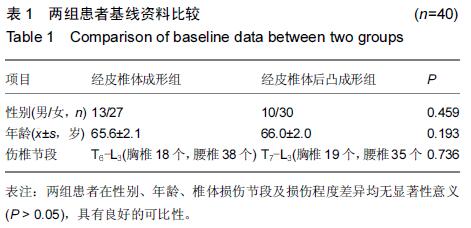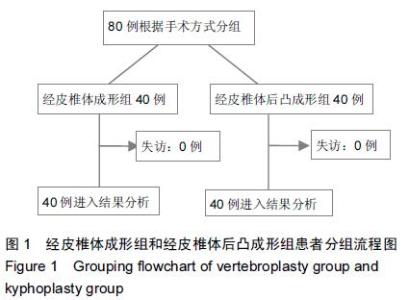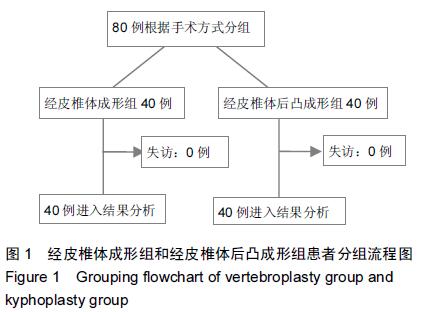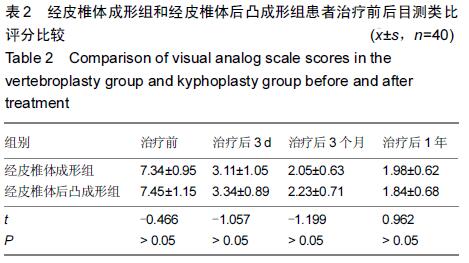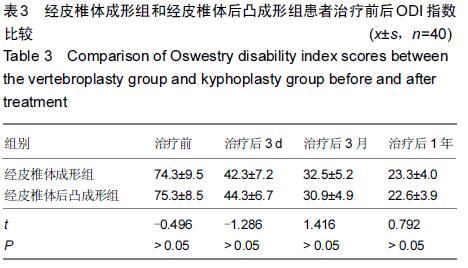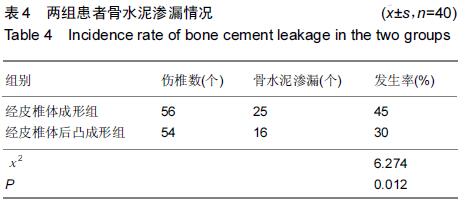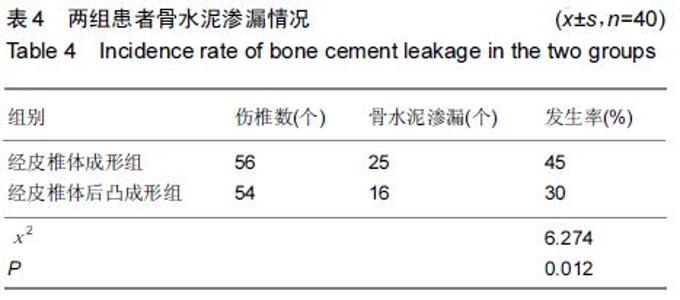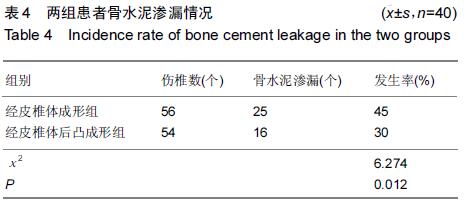[2] 徐超,伊力哈木•托合提,李国华,等.高粘度与低粘度骨水泥经皮椎体成形术治疗骨质疏松椎体压缩骨折的疗效和并发症[J].中国脊柱脊髓杂志,2014,24(10):900-905.
[3] 彭成忠,周春芳,曾钊,等.脊柱外固定和椎体成形注入骨水泥治疗老年胸腰椎骨折[J].中国组织工程研究, 2013,17(4):582-587.
[4] 张刚,周建伟,邹德威,等.选择性单侧经皮椎体后凸成形术治疗骨质疏松性椎体压缩骨折的疗效分析[J].中国矫形外科杂志, 2013, 21(6):533-537.
[5] 钱利海,梁清宇,樊新甫.经皮椎体后凸成形术治疗骨质疏松性椎体压缩性骨折[J].实用骨科杂志,2013,19(10):912-915.
[6] 黄晓楠.骨质疏松性椎体压缩骨折治疗:注入高黏度与低黏度骨水泥的对比[J].中国组织工程研究,2014,18(16):5-11.
[7] 王彦伟.经皮椎体成形术结合手法正脊与经皮椎体后凸成形术治疗椎体压缩性骨折临床比较[J].吉林医学,2012,33(9): 1849-1850.
[8] 卢海川,吴益奇,黄春辉,等.经皮球囊扩张式椎体成形术治疗骨质疏松性椎体压缩骨折疗效研究[J].中国矫形外科杂志, 2013, 21(4): 403-405.
[9] Stevenson M, Gomersall T,Lloyd Jones M,et al.Percutaneous vertebroplasty and percutaneous balloon kyphoplasty for the treatment of osteoporotic vertebral fractures: a systematic review and cost-effectiveness analysis. Health Technol Assess. 2014;18(17):1290.
[10] Liu J, Li X, Tang D, et al.Comparing pain reduction following vertebroplasty and conservative treatment for osteoporotic vertebral compression fiactures: a meta-analysis of randomized controlled trials. Pain Physician. 2013; 16(5): 455-464.
[11] 鲍剑峰,梁小弟,米明珊,等.个体化方案治疗重度骨质疏松性胸腰椎骨折的临床观察[J].中国保健营养(上旬刊),2014,24(7): 3784-3785.
[12] 李波,余雨,卢旻鹏,等.高粘度骨水泥注入椎体成形术治疗急性重度骨质疏松椎体压缩性骨折[J].激光杂志,2013,34(6): 118-119.
[13] 余颖锋,李翠芬,姚汉刚,等.经皮穿刺椎体成形术治疗老年骨质疏松性椎体压缩性骨折71例临床分析[J].临床和实验医学杂志, 2012,11(18):1476-1477.
[14] 金渡,韩责和,赖震,等.PVP与PKP治疗老年骨质疏松性椎体压缩性骨折临床研究[J].浙江中西医结合杂志,2012,22(1):32-34.
[15] 刘冬斌,李辉,程志安,等.经皮椎体成形术联合鲑鱼降钙素治疗骨质疏松椎体压缩性骨折的临床观察[J].中国骨质疏松杂志, 2012,18(1):36-39.
[16] 李建哲,贾全章.经皮穿刺椎体成形术治疗骨质疏松性椎体压缩性骨折102例[J].中国老年学杂志,2013,33(13):3235-3236.
[17] 伍永权,葛占洲,陈秀民,等.经皮椎体后凸成形术治疗老年椎体压缩性骨折的疗效观察[J].临床医学工程,2012,19(4):589-590.
[18] 何成建,李永东,顾一峰,等.经皮椎体成形术联合介入肿瘤摘除术治疗有神经压迫症状的恶性椎体压缩性骨折[J].介入放射学杂志, 2013,22(11):914-919.
[19] 毛丹,熊敏,曾云,等.骨质疏松性椎体压缩性骨折经皮椎体成形术后再发骨折的治疗[J].中华实验外科杂志,2013,30(10): 2213-2214.
[20] 唐良华,程志刚,易洪城,等.中西医结合治疗老年骨质疏松椎体压缩性骨折25例的体会[J].贵阳中医学院学报,2012,34(2):62-64.
[21] 郭锦明,严宏生,刘俊,等.牵引复位结合“双同法”PVP治疗老年创伤性椎体压缩性骨折[J].颈腰痛杂志,2015,36(2):128-130.
[22] 刘伯昊,黎泽森,李美军,等.经皮椎体成形术与椎体后凸成形术治疗老年骨质疏松性椎体压缩骨折的临床分析[J].临床和实验医学杂志,2013,12(5):357-358,361.
[23] 许明义,胡建功.椎体成形术治疗骨质疏松性椎体压缩性骨折86例疗效观察[J].山东医药,2015,55(17):105-106.
[24] Lange A,Kasperk C,Alvares L,et al.Survival and Cost Comparison of Kyphoplasty and Percutaneous Vertebroplas Using German Claims Data.Spine (Phila Pa 1976). 2013; 39(4): 318-326.
[25] Liu J,Li X,Tang D,et al.Comparing pain reduction following vertebroplasty and conservative treatment for osteoporotic vertebral compression fractures: a meta-analysis of randomized controlled trials. Pain Physician. 2013;16(5): 455-464.
[26] Kim JH,Yoo SH.Long-term Follow-up of Percutaneous Vertebroplasty in Osteoporotic Compression Fracture: Minimum of 5 Years Follow-up. Asian Spine J. 2012; 6(1): 6-14.
[27] Kim KW,Cho KJ,Kim SW,et al.A nation-wide, outpatient-base survey on the pain, disability, and satisfaction of patients wit osteoporotic vertebral compression fractures.Asian Spine J 2013;7(4):301-307.
[28] Chen D,An ZQ,Song S,et al.Percutaneous vertebroplasty compared with conservative treatment in patients with chron painful osteoporotic spinal fractures.J Clin Neurosci. 2014; 21(3):473-477.
[29] Lee YK,Jang S,Lee HJ,et al.Mortality after vertebral fracture in Korea: analysis of the National Claim Registry.Osteoporo Int.2012;23(7):1859-1865.

